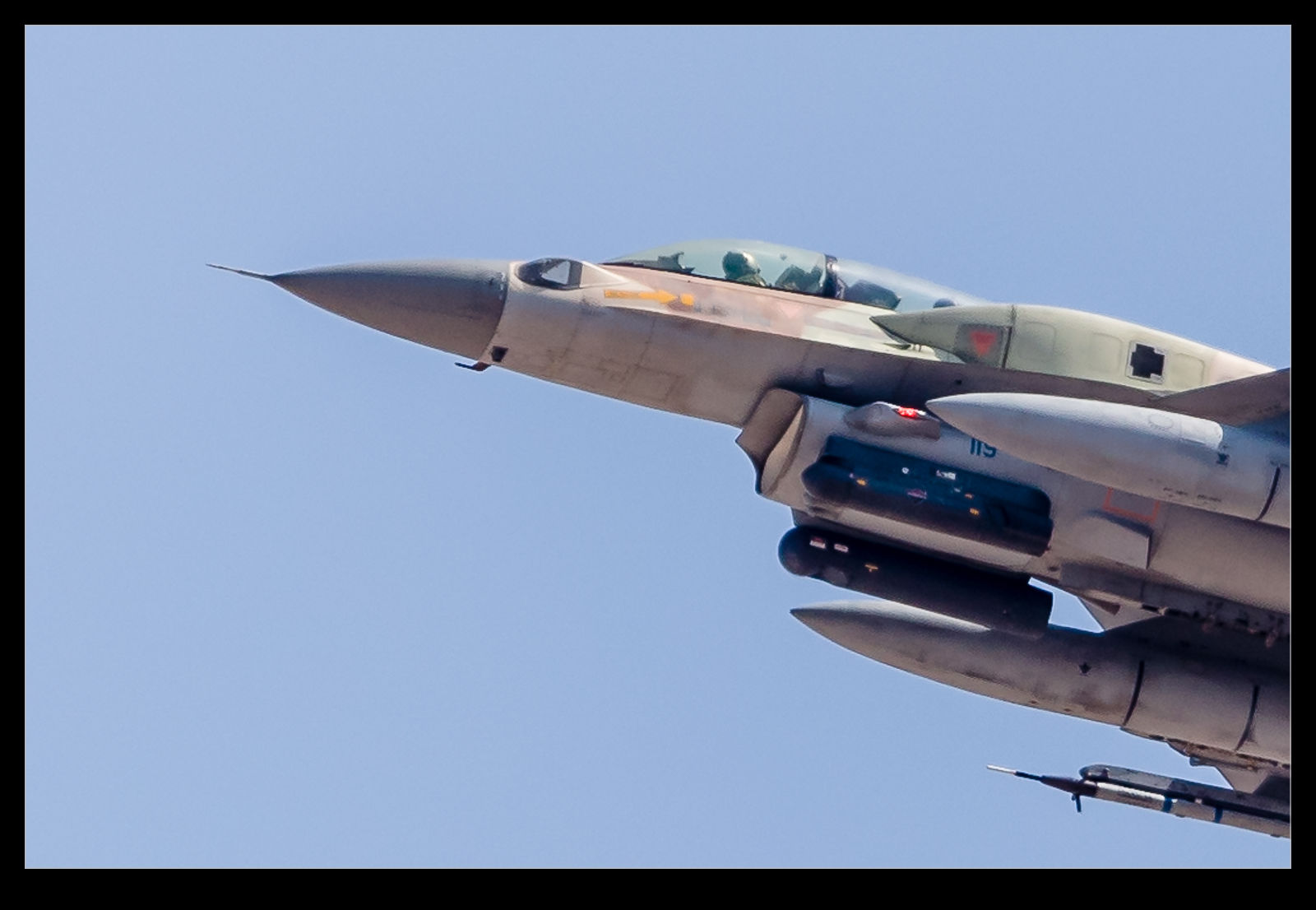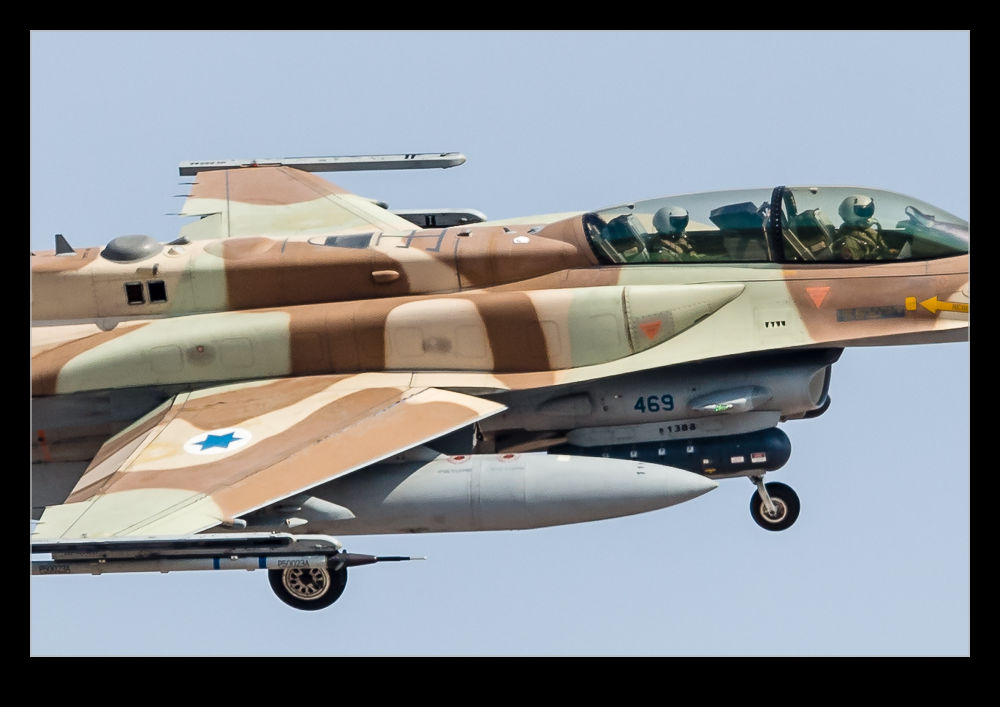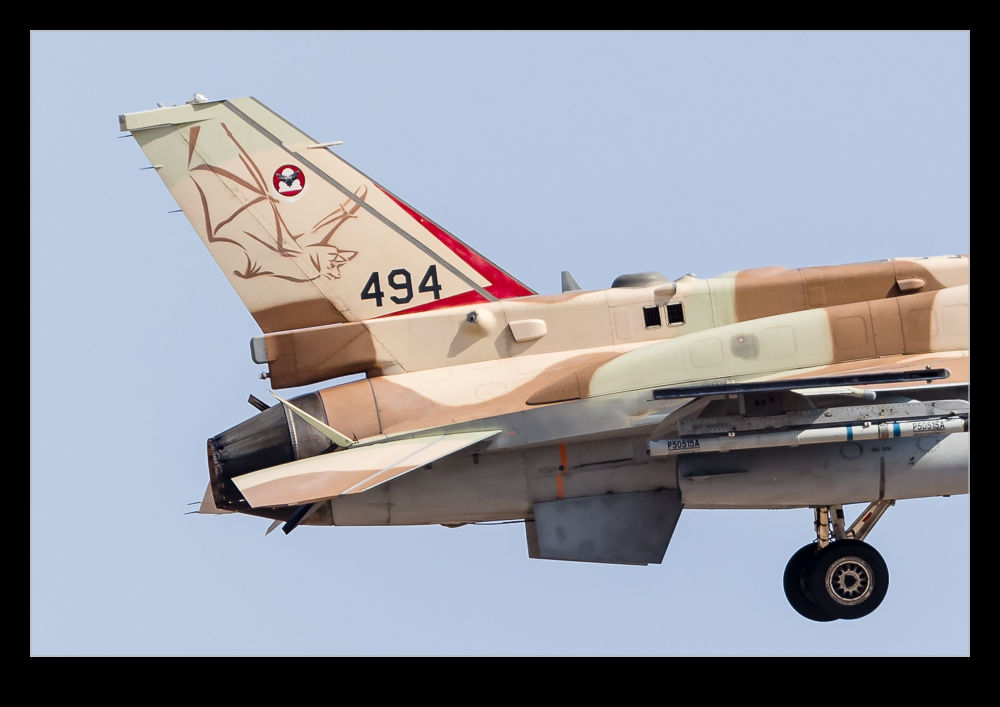 Lockheed Martin has been evolving the F-16 over the years. It has been massively transformed from the original F-16A (which was a big change from the YF-16) to the Block 50/52 version. The development of the F-16E/F for the UAE took the jet up another level. When the Israeli Air Force decided to buy an updated jet, they created the F-16I Sufa. A lot of local electronic systems are incorporated to the LM designed airframe.
Lockheed Martin has been evolving the F-16 over the years. It has been massively transformed from the original F-16A (which was a big change from the YF-16) to the Block 50/52 version. The development of the F-16E/F for the UAE took the jet up another level. When the Israeli Air Force decided to buy an updated jet, they created the F-16I Sufa. A lot of local electronic systems are incorporated to the LM designed airframe.
 As you take a closer look at the airframe, you see all sorts of bits that are specific to the jet. The big spine is a common feature these days although it was pioneered on Israeli jets a long time ago. Aside from that, there is a circular antenna on the spine. On the sides of the inlets are some more antennae. Head back on the spine and some more side antennae seem to be present (although not on all of the jets I saw). Then there are sensors on the canopy (which I guess are related to helmet sighting systems). The jet is covered in devices. I assume there is a great system for integrating all of the information these sensors are gathering. The crew should have plenty of data to work with.
As you take a closer look at the airframe, you see all sorts of bits that are specific to the jet. The big spine is a common feature these days although it was pioneered on Israeli jets a long time ago. Aside from that, there is a circular antenna on the spine. On the sides of the inlets are some more antennae. Head back on the spine and some more side antennae seem to be present (although not on all of the jets I saw). Then there are sensors on the canopy (which I guess are related to helmet sighting systems). The jet is covered in devices. I assume there is a great system for integrating all of the information these sensors are gathering. The crew should have plenty of data to work with.






